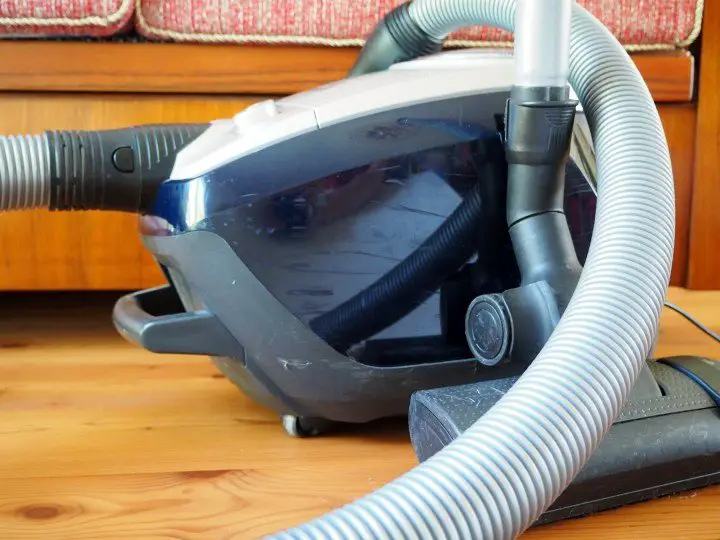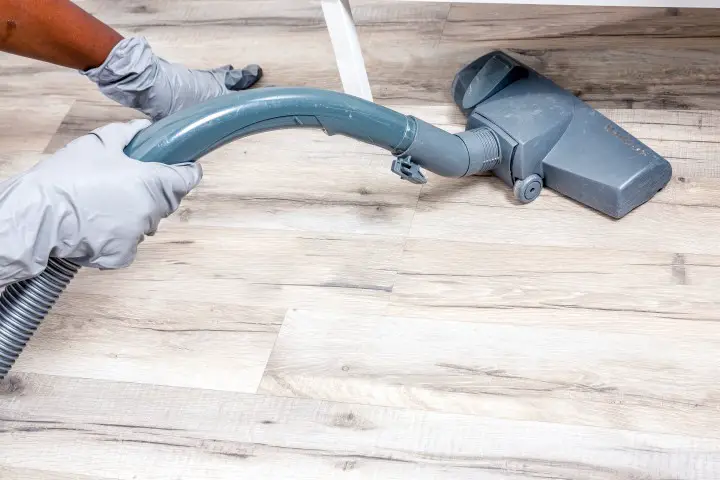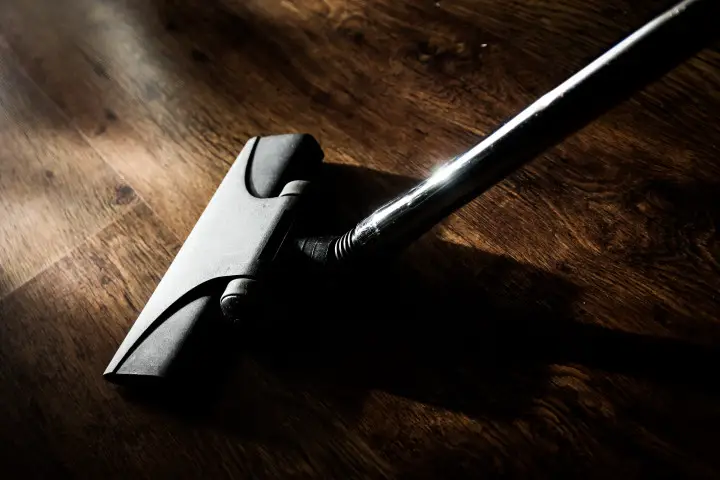Last Updated on June 24, 2024 By Emma W. Thomas
Whether a vacuum cleaner can blow air depends on what type of vacuum cleaner you have. You should remember that a typical vacuum cleaner is not designed to blow air. However, there are some vacuum cleaner models that include a “blow” or “blower” function. These models usually have a reversible motor that can be switched to blow air instead of creating suction.

List of Vacuum Cleaner Models with a “Blow” or “Blower” Function
- Shop-Vac 9633400 – This is a wet/dry vacuum cleaner that also has a blower function. It can be used to blow leaves, debris, and dust.
- Bissell Garage Pro 18P03 – This is a versatile vacuum cleaner designed for use in garages. It has a blower function that can be used to blow away dirt and leaves.
- RIDGID WD1450 – This is a powerful wet/dry vacuum cleaner that also features a blower function. It can be used for both cleaning and blowing tasks.
- Hoover L2310 Garage Utility Vacuum – This vacuum cleaner is specifically designed for use in garages and workshops. It includes a blower function to help with blowing away dirt and debris.
- Stanley SL18129 – This is a 4-gallon wet/dry vacuum cleaner that comes with a blower function. It is suitable for both indoor and outdoor cleaning tasks.
- Craftsman 12004 – This is a versatile wet/dry vacuum cleaner that includes a blower function. It is capable of handling both cleaning and blowing tasks.
- Armor All AA255 – This compact wet/dry vacuum cleaner features a blower function that can be used for blowing dust, leaves, and debris.
- BLACK+DECKER BV6000 – Although primarily known as a leaf blower, this model from BLACK+DECKER also functions as a vacuum cleaner. It can be used to blow leaves and debris, as well as vacuum them up.
Tools Required to Reverse Vacuum Cleaner Airflow
Transforming your vacuum cleaner into a blower can be a convenient and cost-effective solution for various cleaning tasks. Before you begin, gather the following essential tools to ensure a smooth transition:
- Vacuum cleaner user manual: Familiarize yourself with the specific parts, features, and dismantling instructions of your vacuum model.
- Safety gear: Unplug your vacuum cleaner and be cautious of the power cord throughout the process to avoid accidents.
- Proper vacuum type: Canister and bag vacuums are best suited for this conversion.
Follow the manufacturer’s instructions and steps provided in online guides to safely turn your vacuum cleaner into a blower.
Steps to Turn a Bag Vacuum into a Blower
Turning a bag vacuum into a blower is a convenient way to clean without buying a separate machine. Here are the steps to transform your vacuum:
1. Unplug your vacuum and locate its user manual to familiarize yourself with its parts.
2. Determine the vacuum type you have, as bag vacuums and canister vacuums work best for this transformation.
3. Gather the necessary tools and materials before dismantling the vacuum.
4. Carefully remove the interior vacuum bag from the appliance’s intake hole.
5. Allow the vacuum to blow out dirt, debris, and dust.
6. Secure the vacuum tube to the intake hole tightly, and enjoy your new blower!
Is there air in a vacuum cleaner?
Yes, there is air in a vacuum cleaner, as its primary function is to create suction by pulling air into it. The airflow created by the vacuum cleaner is what helps it pick up dust and debris from surfaces. While most vacuum cleaners are designed to suck air in, some models, particularly shop vacuums, can also serve as blowers. These dual-purpose vacuums allow you to switch between suction and blowing functions, making them versatile tools for various cleaning tasks around the house.

Can a Dyson vacuum blow air?
A Dyson vacuum is a versatile and efficient cleaning tool, known for its powerful suction capability. But did you know it can also blow air? Some Dyson models offer the option to reverse airflow, converting the vacuum into a blower. This multi-functional feature saves you money and effectively performs various tasks around your home.
Reversing the airflow on a Dyson vacuum is a simple process. Just consult your user manual for specific instructions, as the steps may vary depending on the vacuum model. For canister vacuums, remove the end tube and plug in the vacuum to allow it to function as a blower. Dyson bag vacuums require slightly different steps; unscrew the necessary components and follow the manual’s guidelines to transform your vacuum into a blower.
Keep in mind that not all Dyson vacuums have this feature. Newer models may include a pre-installed blower port, while some older models, especially upright units, may not provide this option. Always check your specific model before attempting to reverse airflow to ensure compatibility.
Can you have oxygen in a vacuum?
In the realm of science, a vacuum refers to a space devoid of matter, including air. This prompts the question: can oxygen exist in a vacuum? Technically, it is quite challenging to achieve a perfect vacuum, as some particles of matter, albeit very few, will remain.
Hence, while a vacuum may not support the presence of oxygen in any significant quantity, there might still be occasional oxygen molecules scattered within this space. However, such a sparse distribution of oxygen would be insufficient to sustain any oxygen-dependent processes or life forms.

How do I get my vacuum to blow air?
Getting your vacuum cleaner to blow air is not as complex as it may seem. First, determine the type of vacuum cleaner you have, as bag vacuums and canister vacuums work best for this purpose.
Gather the necessary equipment mentioned in the user manual. To reverse a traditional bag vacuum’s airflow, remove the vacuum bag, shake it to loosen any buildup, and securely attach the vacuum tube to the intake hole.
For shop vacuums, remove the flexible hose, exhaust cap, and reinsert the hose into the exhaust hole. Enjoy your vacuum cleaner’s new blower functionality!
Can I use my vacuum to blow up an air mattress?
Yes, you can use your vacuum cleaner to inflate an air mattress. Most vacuum cleaners have a hose attachment and exhaust feature, making it possible to blow up an airbed without a pump.
To do this, first, ensure your vacuum is clean and ready for use. Then, replace the standard nozzle with a thinner one or use the hose without a nozzle.
Lay the air mattress flat, attach the vacuum hose to the inflation valve, and turn on the exhaust mode. Inflate the mattress until it reaches your desired firmness.
Do wet and dry vacuums blow?
Wet and dry vacuums, like the RIDGID WD1685ND, are versatile cleaning tools that can both suck and blow air. This dual functionality makes them great for tackling various messes around the house, office, or other similar premises.
These vacuums are designed not only to clean up wet or dry spills, but also to blow air out, making them a perfect alternative to a leaf blower. They can be used for removing dust and debris from floors, tools, and work surfaces, or for blowing out large, lightweight materials that are difficult to vacuum up.
References:
Emma is a graduate of Domestic Science or Family and Consumer Sciences (Home Economics) from the University of Wisconsin. She has 7 years of experience Working with the strategic section of BestBuy and now writing full-time for Homeeon.
From Managing the Home, Interiors, Cleaning, and Exteriors to Gardening and everything about Making A Home Liveable – is her passion and this Homeeon is the result of this.
Emma loves decorating her home with the best stuff found online. She cares about quality over anything and writes reviews about them here in Homeeon. Get in touch with her over Pinterest.
Keep reading her blogs.
